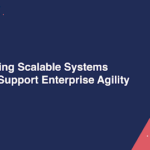Ever get a weird feeling your system is fine… until it’s not? That your firewall is doing its job, your MFA works, and your team hasn’t clicked a shady link in months—so everything must be secure for Cybersecurity Red Flags?
Then comes the breach.
It’s not always the loud stuff that takes you down. The real threats are often the ones that hide in plain sight. Quiet logins at odd hours. Misconfigured permissions from five years ago. A stale account no one touched since the intern left. These aren’t flashy, but they’re deadly.
Today, cybersecurity isn’t just about keeping bad guys out. It’s about recognizing what’s already broken, misused, or forgotten inside your system. In a time when hybrid cloud environments, remote work, and identity-first threats are reshaping the threat landscape, ignoring the small things is a luxury no company can afford.
In this blog, we will share the silent warning signs most organizations miss, how to spot them early, and what it takes to strengthen your defenses before the damage is done.
Discover insights connected to your interests—check out the related post today.
When “Normal” Isn’t Safe Anymore
Think about what your system calls “normal.” A legacy service account logging in at 3 a.m.? Maybe that’s always been allowed. A new user suddenly assigned to several admin roles? That might not trigger an alert if it technically fits policy.
But in reality, these are red flags waving at full speed.
Many businesses assume their tools are doing enough. SIEMs, endpoint protection, basic patching—those are the staples. But these solutions often look for known issues. The catch is that attackers don’t always behave predictably. They live in the gray space between systems, where policies are flexible, and oversight is low.
This is where a security posture assessment can make the difference. Instead of waiting for a major breach to point out your blind spots, this kind of assessment gives you a proactive snapshot of your risks—right now. Tools like Semperis’ Lightning Intelligence, for instance, can scan hybrid Active Directory environments and show where you’re vulnerable due to outdated permissions, misconfigurations, or high-risk accounts. In other words, it tells you what your current stack isn’t catching.
And that’s key. Because modern attacks don’t wait for you to notice the gap—they find it and move fast.
The Hidden Cost of Legacy Habits
There’s a reason attackers still rely on old tricks: they keep working.
One example? Default settings. Whether it’s unchanged admin passwords or open ports that were never closed after an update, small oversights become big liabilities. And once a foothold is gained, lateral movement is often easy—especially in systems that haven’t been reviewed in years.
This isn’t just a small business problem. Even tech giants have slipped. Misconfigured storage buckets, forgotten testing servers, or insufficient logging have led to massive leaks in the last few years. What’s worse is that many of these weren’t discovered by internal teams, but by researchers—or hackers.
Hybrid environments don’t help either. Mixing on-prem infrastructure with cloud systems creates a sprawling maze of dependencies, access points, and trust relationships. In theory, it all works. In practice, that complexity becomes impossible to monitor manually, which is why many organizations turn to reliable cybersecurity service providers for stronger visibility and support.
And attackers know this. They look for the seams—where old systems connect with new, where the monitoring breaks down, and where accountability is fuzzy.
What Activity Should Set Off Alarms
There are some behaviors that should always raise eyebrows, even if they’re technically “allowed.” Here’s what to keep an eye on:
- Stale accounts with elevated access: If no one’s used an account in months, but it still has admin privileges, that’s a problem.
- Accounts with permissions across environments: Especially if they span cloud and on-prem systems. These are often exploited during lateral movement.
- Changes that aren’t logged: If a user modifies key settings and it doesn’t show up in your logs, either your logging is incomplete or someone’s bypassing your monitoring entirely.
- Multiple failed logins from internal IPs: Could be a misconfigured script… or it could be someone testing passwords internally.
- Service accounts behaving like users: If a non-human account starts logging in from new locations or at unusual times, that’s not just odd—it’s dangerous.
The point isn’t to chase every blip. It’s to know what patterns matter and have the tools to notice them.
Culture Matters More Than Checklists
Here’s an uncomfortable truth: most red flags don’t go unnoticed. They go unacknowledged.
Security teams are often stretched thin, juggling urgent tickets with vague alerts. When leadership only focuses on compliance or post-breach recovery, there’s little incentive to catch issues early. A “that’s probably fine” attitude takes root, and it becomes cultural.
What’s needed is not just better tooling—it’s better awareness.
Start with user education, not just for your security team but for everyone. Make it normal for employees to report odd system behavior. Empower IT to ask hard questions about long-standing configurations. Reward teams for spotting weak spots early, not just patching them after something breaks.
Even the most advanced tools won’t help if no one’s paying attention to what they say.
Today’s Trends, Tomorrow’s Targets
Increased remote work and BYOD policies mean the perimeter is more porous than ever. Every employee phone, home router, or hotel Wi-Fi connection becomes part of your extended ecosystem. The idea that you can secure everything from a single dashboard is outdated.
At the same time, attackers are no longer lone hackers in basements. They’re organized, well-funded, and increasingly using automation and AI to find vulnerabilities faster than humans can fix them. A single overlooked setting can lead to a ransomware event, a supply chain attack, or worse.
And the shift to identity-based security? That’s no silver bullet. If identity is the new perimeter, then identity is also the new weakest link.
Which is why visibility—real, constant visibility—is non-negotiable.
The Bottom Line
Most threats don’t look like threats—until after the fact. The scariest thing in cybersecurity isn’t what you can see. It’s what you assume is safe and working, only to find out it hasn’t been for months.
By rethinking what counts as “normal,” investing in regular posture assessments, and breaking down the cultural walls that let threats blend in, organizations can move from reactive defense to active resilience.
Because the next big breach won’t be flashy. It’ll be quiet. It’ll slip through the cracks you didn’t know were there. And it’s your job to spot it before it does.
xplore more ideas that inspire growth—click now to continue your journey.






